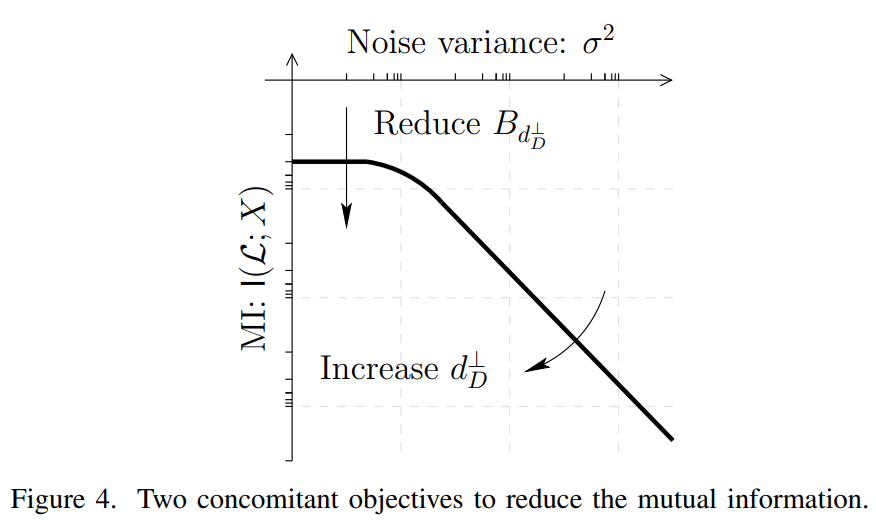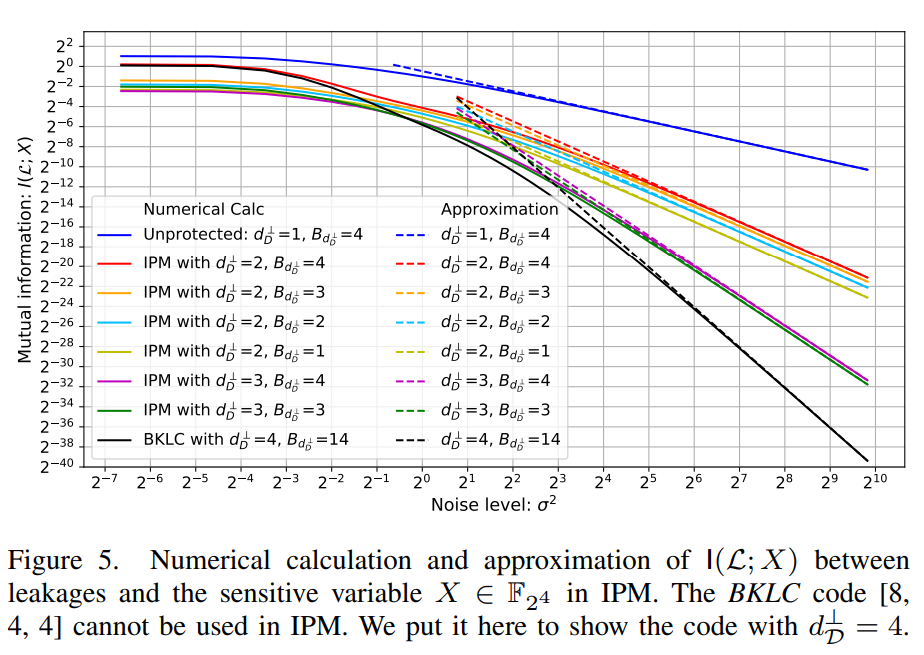This repo is created for the open-source of the paper Optimizing Inner Product Masking Scheme by A Coding Theory Approach, which was published by IEEE Transactions on Information Forensics and Security (T-IFS). All the data and scripts would allow researchers to verify and reproduce our results.
Basically, we present here the exhaustive study of all linear codes for Inner Product Masking (IPM)[1,2] and show how to choose optimal linear codes for IPM. In particular, we give the optimal instances with n=2, 3 shares and l=4, 8 bits, respectively. All linear codes presented here are checked formally by Magma Computational Algebra System [3].
- We recommend the Mathjax Plugin for Github on Chrome to have a better display of mathematical formulas.
The weight enumerator [4] specifies the number of codewords of the same Hamming weights in a linear code
It can also be denoted as:
Two linear codes are said to be equivalent if one can be obtained from the other by a series of operations of the following two types:
- an arbitrary permutation of the coordinate positions, and
- in any coordinate position, multiplication by any nonzero scalar.
It is interesting to notice that equivalent linear codes have the same weight distribution.
We present hereafter an exhaustive study of the linear codes for IPM, and show the optimal codes that can be a takeaway conclusion.
See here: Optimal codes IPM (n=2 & $l$=4).
The optimal codes are given in Tab. II in Section 2. We also present one example of BKLC code with parameter [8, 4, 4] which is better than all codes used in IPM. This BKLC code has been used in RSM (Rotating Sbox Masking) scheme during DPA Contest V4.1&4.2.
See here: Optimal codes IPM (n=2 & $l$=8).
The optimal codes are given in Tab. II in Section 2. We also present one example of BKLC code with parameter [16, 8, 5] which is better than all codes used in IPM.
See here: Optimal codes IPM (n=3 & $l$=4).
The optimal codes are given in Tab. II in Section 2. We also present one example of BKLC code with parameter [12, 4, 6], which is equivalent the best codes used in IPM.
See here: Optimal codes IPM (n=3 & $l$=8).
We present the weight enumerators of all 255*255=65025 linear codes for IPM. We omit the detaild tables for the sake of brevity, but only present all codes with maximized dual distance
The optimal codes are given in Tab. II in Section 2. We also present one example of BKLC code with parameter [24, 8, 8], which is not as good as the best codes in IPM.
2.5 Information-theoretic evaluation [4]
We propose to use two parameters, the dual distance
With
We share the Magma scripts to easily check the validity of our results. See here: Magma scripts. The corresponding logs are also provided here: Magma logs.
This repository is placed into the public domain. Anyone can redistribute it and/or modify it under the GNU General Public License version 3.0.
Copyright (C) 2020, Télécom Paris - All Rights Reserved to Authors.
- Wei Cheng (wei.cheng AT telecom-paris.fr)
- Sylvain Guilley (sylvain.guilley AT secure-ic.com)
[1] Josep Balasch, Sebastian Faust, Benedikt Gierlichs, Clara Paglialonga, François-Xavier Standaert. Consolidating Inner Product Masking. ASIACRYPT (1) 2017: 724-754.
[2] Josep Balasch, Sebastian Faust, Benedikt Gierlichs. Inner Product Masking Revisited. EUROCRYPT (1) 2015: 486-510.
[3] Wieb Bosma, John Cannon, and Catherine Playoust, The Magma algebra system. I. The user language, J. Symbolic Comput., 24 (1997), 235–265. Accessed Jan 20, 2019.
[4] Wei Cheng, Sylvain Guilley, Claude Carlet, Sihem Mesnager and Jean-Luc Danger, Optimizing Inner Product Masking Scheme by A Coding Theory Approach. The IEEE Transactions on Information Forensics and Security, doi: 10.1109/TIFS.2020.3009609.
[5] Wei Cheng, Claude Carlet, Kouassi Goli, Jean-Luc Danger and Sylvain Guilley. Detecting Faults in Inner Product Masking Scheme - IPM-FD: IPM with Fault Detection. PROOFS 2019: 17-32, 2019.

